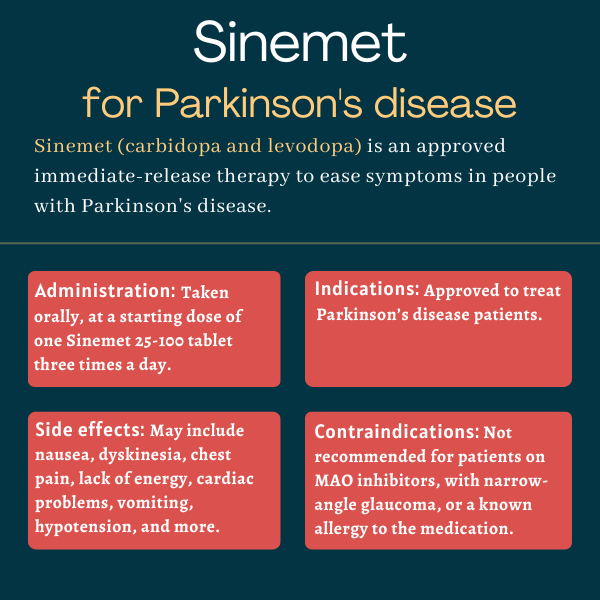FAQs about Sinemet
The U.S. Food and Drug Administration approved Sinemet in 1975 for the treatment of people with Parkinson’s disease, to ease symptoms of the neurodegenerative disorder. This marked the first approval in the U.S. of a combination therapy containing both levodopa and carbidopa. The regulatory agency also approved the medication for certain kinds of parkinsonism, or conditions with Parkinson’s-like symptoms.
Animal studies suggest that Sinemet may cause harm to a developing fetus. However, the therapy has not been well studied in pregnant women so it should be used during pregnancy only if the potential benefit justifies the potential risk to the mother and child. Patients who become or intend to become pregnant should always talk to their healthcare providers about the potential risks of taking Sinemet.
Some patients on Sinemet have reported somnolence, or sleepiness, and suddenly falling asleep without warning during daily activities. Thus, until patients know exactly how the therapy affects them, those initiating treatment should not drive and should avoid other potentially dangerous activities that might result in harm if they become somnolent.
Sinemet reaches a peak concentration in the blood about half an hour after administration, at which point an easing in Parkinson’s symptoms should already be evident. However, because the initial recommended dose of Sinemet must be carefully determined for each patient, some individuals may require dose adjustments before experiencing the full benefits of the therapy.
There have been some reports of hair loss, known as alopecia, in people taking Sinemet. Weight gain also has been reported with the use of levodopa alone and with various carbidopa and levodopa formulations; this side effect may occur with Sinemet.
Related Articles

 Fact-checked by
Fact-checked by 








